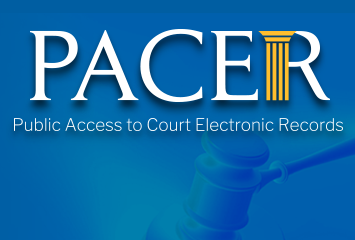PACER Settlement a Milestone But Not the Endgame
Access to court documents should never have cost this much to begin with, and legislation to fix this is still needed
 More than six years after the complaint was filed, the class action lawsuit aimed at clawing back some of the money paid by users of the judiciary’s antiquated courts records system has reached a likely settlement.
More than six years after the complaint was filed, the class action lawsuit aimed at clawing back some of the money paid by users of the judiciary’s antiquated courts records system has reached a likely settlement.
And yet, the PACER paywall remains standing.
Of the $920 million in fees brought in during the period in question (2010-2016; see note at end), users will receive $100 million back. That’s not nothing. The settlement is truly impressive and unprecedented, and it appears it will achieve a fair resolution for the class given the parameters of the case, which concerned the portion of the fees (~$200 million) that were used illegally to fund non-records-related programs — on courtroom IT, e-notifications and more. But there’s more to do.
“This case highlighted the rotten fee-for-access arrangement the judiciary has used for decades to expand its coffers,” Fix the Court’s Gabe Roth said. “And yet, the only way to fix this national embarrassment is with legislation. With the litigation in the rearview, I’m confident we’ll see movement on the bipartisan, Committee-passed Open Courts Act in the lame-duck.”
In fact, the settlement proposal itself noted that Congress is needed to “produce an outcome that the plaintiffs had no way of achieving through litigation alone” (p. 7), that is, free PACER. (The judiciary opposes the Open Courts Act because of course they do.)
According to the CBO, a modernized, searchable, user-friendly court records system should cost a mere $15 million a year to run (p. 6) — not $150 million, which is what PACER fees brought in on average from 2017 to 2021 (p. 3). Fifteen million, though also a rounding error in the judiciary’s $8 billion annual budget, could be achieved via new appropriations or by charging reasonable fees to the system’s largest users (think DOJ, Lexis, or Westlaw) for a time, as the OCA envisions. The CBO recently estimated (p. 6) that a modernized records system would save the federal government $343 million over the status quo over the next decade.
The savings numbers are not surprising considering, per court filings, it likely costs the judiciary about one-half of one ten-thousandth of a penny (p. 52) to produce a single, static page of text on our computers and phones — and not a dime per page.
PACER users who have yet to install the RECAP plug-in from the Free Law Project, which retrieves documents on PACER for free after the first download by a RECAP user, would have been charged $11.00 to retrieve the class action docket and yesterday’s settlement documents (or more, if you mis-clicked; no clickbacks!) and hundreds if not thousands more to read the most critical filings in the case.
“Maybe we’ll sue on behalf of all those who’ve accessed PACER since the end of the settlement date (May 31, 2018). I have zero faith the judiciary has stopped using it as a slush fund,” Roth added.
The class action is NVLSP, et al., v. U.S. (16-745 in D.D.C.).
Note: Though the class action covers 2010 to 2016, those who used PACER from 2016 to 2018 can make claims for the settlement money, as well.